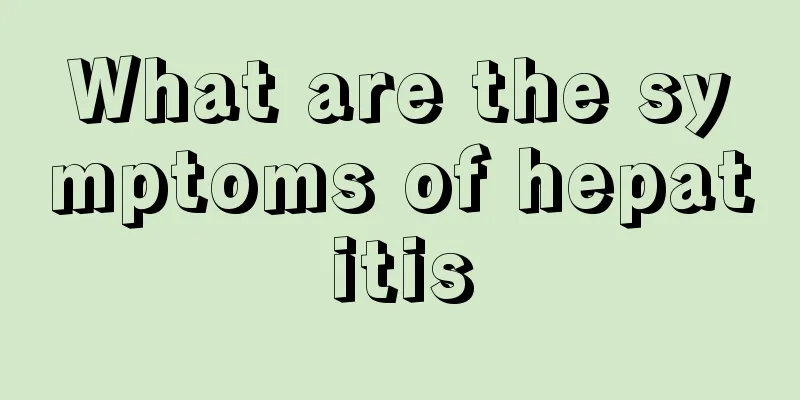What fruits have anti-inflammatory effects

|
Tonsillitis is a common inflammation in life. There are usually many factors that cause tonsillitis, and most of them will cause inflammation in the patient's throat, which will feel itchy and painful, and there will be a tearing feeling when swallowing food. At this time, everyone will think of eating more fruits to achieve the effect of anti-inflammatory and relieve the aggravation of the disease. At this time, it is recommended to eat more light and watery foods, and also find the causes of tonsillitis. What is tonsillitis Tonsillitis can be divided into acute tonsillitis and chronic tonsillitis. Chronic tonsillitis may occur after suffering from acute infectious diseases (such as scarlet fever, measles, influenza, diphtheria, etc.), and sinus infections in the nasal cavity may also be associated with this disease. The most common pathogens are streptococci and staphylococci. The clinical manifestations include frequent throat discomfort, foreign body sensation, dryness, itching, irritating cough, bad breath and other symptoms. Causes 1. It is caused by the accumulation of bacteria and secretions in the tonsillar fossa. The pathogenic bacteria are mainly streptococci or staphylococci. 2. Secondary to certain acute infectious diseases such as scarlet fever, diphtheria, influenza, measles, etc. Tonsillitis can be divided into acute tonsillitis and chronic tonsillitis Clinical manifestations 1. Acute phase (1) Systemic symptoms start suddenly, with chills and high fever up to 39-40°C. Young children in particular may suffer from convulsions, vomiting or lethargy, loss of appetite, constipation, and general laziness due to high fever. (2) Local symptoms include obvious sore throat, especially when swallowing. Severe pain may radiate to the ears. Young children often cry and become restless because they cannot swallow. If children's breathing is affected by enlarged tonsils, their sleep may be disturbed and they often wake up at night. 2. Chronic stage (1) Recurrent sore throat occurs when catching a cold, catching a cold, being tired, having poor sleep, or being stimulated by alcohol or tobacco, and is accompanied by discomfort and a feeling of blockage in the throat. (2) Bad breath is often caused by the growth of bacteria in the tonsils and the purulent embolism remaining in the tonsils. Bad breath is caused by bacterial growth and purulent embolism in the tonsils. (3) Enlarged tonsils Enlarged tonsils can cause difficulty in swallowing, slurred speech, shortness of breath or snoring during sleep. (4) Systemic manifestations: Bacteria and pus plugs in the tonsils often enter the digestive tract when swallowed, causing indigestion. If bacterial toxins enter the body, symptoms may include headache, weakness in the limbs, easy fatigue or low fever. examine 1. Acute phase The oropharyngeal mucosa is obviously congested, which may be diffuse. The congestion of tonsils, palatopharyngeal arches and palatine arches is more obvious. During bacterial infection, a significant increase in the total white blood cell count and a significant increase in the classification of neutrophils can be seen. |
<<: How painful is it after the double eyelid anesthetic wears off
>>: What is the effect of inhaling carbon dioxide on breathing?
Recommend
Is ovarian teratoma life-threatening?
In most cases, ovarian teratomas are benign and w...
What to do about osteoporosis? How to treat osteoporosis
Symptoms of osteoporosis often include joint pain...
What are the daily dietary points for liver cancer? Seven early symptoms of liver cancer to remember
Liver cancer is a malignant tumor of the liver. I...
Can canine teeth be pulled out? You will know after reading the following
If there is a canine tooth in a row of teeth, peo...
How to treat advanced lung cancer? Traditional Chinese medicine is the first choice for the treatment of advanced lung cancer
How to treat advanced lung cancer? Lung cancer is...
What are the causes of bladder cancer in the elderly
The bladder is a place where urine is stored. If ...
How to deal with tooth decay
In daily life, we often have toothache. There are...
Dull pain in the lower left side of the abdomen
If you have pain in the lower left side of your a...
How to relieve nasal congestion by using a fan
When the weather is hot, electric fans become a n...
What to do if the inside of teeth is yellow
Neat teeth make a great impression and indicate t...
How to clean a diamond ring
Diamond rings are very important keepsakes when p...
Clinical pathological diagnosis of malignant glioma
Glioma is a tumor that can easily become malignan...
Which is more serious, hiccups or belching
Hiccups and belching are two concepts that people...
What is the nemesis of visceral fat
If you want to eliminate visceral fat, it is defi...
Causes and treatment of hypoglycemia
There are many causes of hypoglycemia. For exampl...









